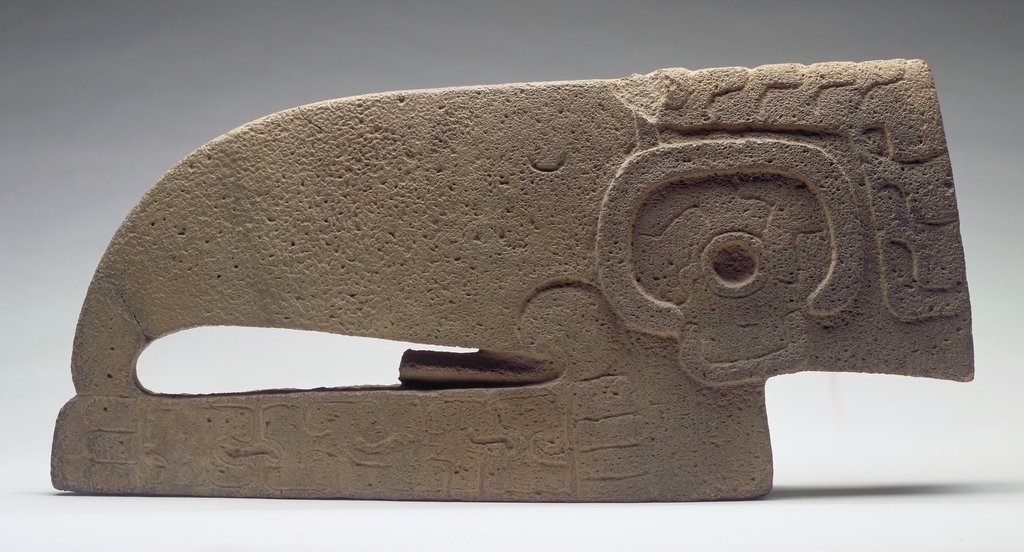Soccer buffs abound in the Twin Cities during the heat of the FIFA World Cup. But how many know about where soccer all began? These MIA pieces (all on view in the Robert and Carolyn Nelson Gallery) show the ancient game that evolved into the modern sport everyone is talking about.
1. Figure
This seated figure is from Mesoamerica, a cultural area covering northern Mexico to Costa Rica where civilization arose and flourished before Spanish colonization. The social, political, and ritual ballgame the figure is dressed for was played across Mesoamerica, often as a substitute for war. The game centered on a heavy, dangerous rubber ball that teams would try to get into an end zone by using only their hips. Modern soccer descended from this ancient ballgame, which was the first team sport ever played in the world. Clad in protective equipment and holding a rubber ball (a tad different from polyester soccer jerseys and cleats), this figure was meant to be put in a tomb to escort the dead into the afterlife.
2. Rattle
This figure, a ballplayer from the Gulf Coast of Mexico, sports a helmet, kneepad, and yoke (called this because of its resemblance to animal yokes) around his hips. To accompany the ballgame, Mesoamericans may have made noise with rattles like this one, or with whistles and horns. (I wonder if they came up with cheers, too.) They took ballgames very seriously–often sacrificing losing players to sustain agricultural fertility and cosmic order. Winner truly did take all.
3. Yoke
To protect his midsection in the “no hand” sport and to avoid broken bones, and even damaged organs, a player would use a u-shaped yoke, often made of cotton, wood, or leather. This stone representation was used for the game’s opening or closing ceremonies, as a trophy, or was placed in tombs. Its detailed carvings reveal that the ballgame was more complex than one may think; it was associated with symbolism and religious beliefs (not so different from how modern sports have become a religion of sorts).
4. Hacha
During the opening and closing ceremonies, yokes were decorated with ornaments such as this hacha in the form of a bird. It is either a parrot or macaw, which references the Hero Twins: supreme ball players who defeated Seven Macaw in the Popol Vuh, a Maya creation story. Looks like the Mesoamericans were superfans without even knowing it. I guess we have them to thank for, not only the game, but also team rivalries and obsessive loyalty to our teams of choice.





